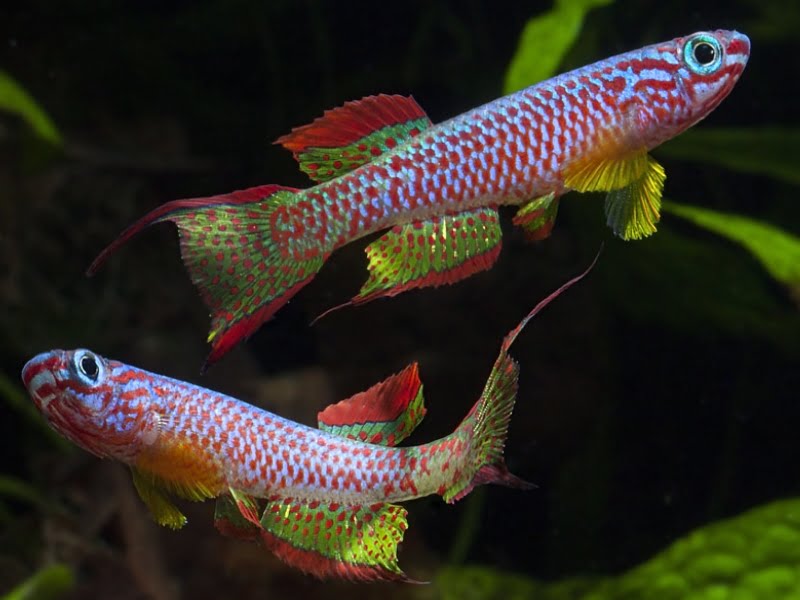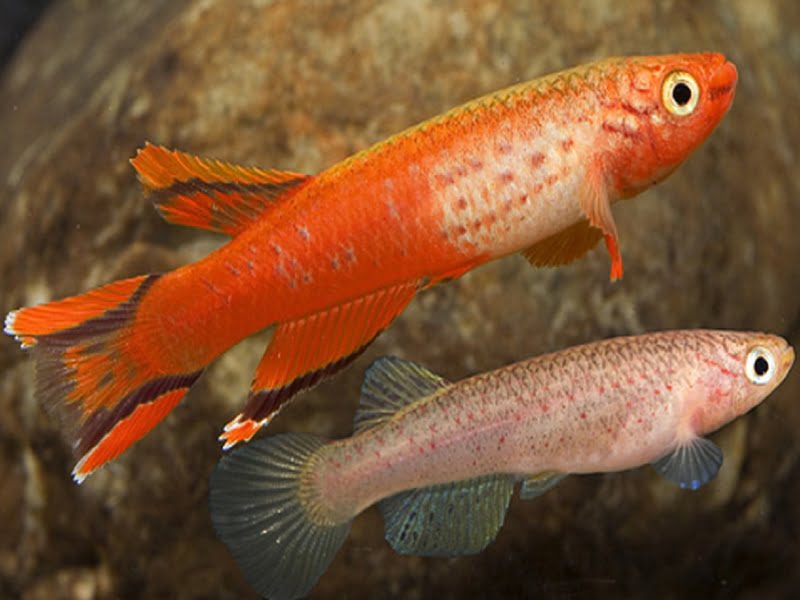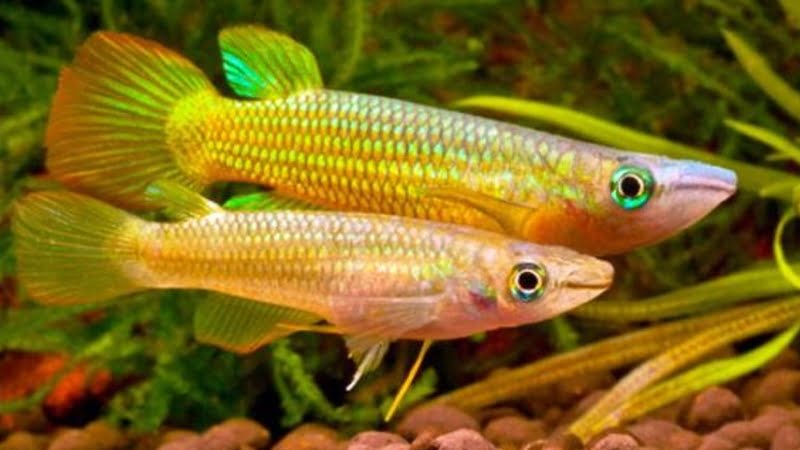How To Tell Male And Female Killifish is a common question when you have a new one. Unfortunately, that’s hard to find the easiest way to determine their gender. How to breed killifish is the question that comes along with it.
Have you found your own answer? If not, let’s check out your clue below.
Killifish: What Should You Know About This Species?
Basic information that includes some interesting facts
Appearance
A killifish is any of several hundred species of elongated fishes in the family Cyprinodontidae (order Atheriniformes), found primarily in tropical Africa and the Americas. This species is known for its bright colors and well-arranged body patterns.
Killifish can reach a maximum length of about 15 cm (6 inches), but many are much smaller.
Both sexes have a flat top. Their mouth is located at the chin. Curved and pointed teeth tear flesh into shreds easily consumed. The fish’s body scales are round.
The fish’s body is cylindrical but slim. Some are spherical in shape. Some of the fish have rounded short fins. Others have long, wide fins. They do vary in size and shape. This characteristic is determined by many factors, including feeding mode.

What they eat
Killifish are mostly carnivores. Some are omnivores, consuming both plant and animal matter from the ground. Fruit flies, shrimp, larvae of mosquitos, and worms are all examples of live organisms. Frozen food can also be fed to them.
Killifish have a life expectancy of only nine months. It is possible for semi-annuals and non-annuals to live for three or five years, based on their life cycle.
How are killifish eggs laid?
All killifish produce eggs, unlike the Poeciliidae family’s live-bearing topminnows (such as Mollies, Platies, Guppies, Swordtails). Killifish that reside in ponds that dry out each year and bury their eggs at the bottom of the pond remain dormant until the water returns. Annual fishes get their name from the fact that their entire life cycle, from conception to reproduction and eventual death, rarely lasts longer than a year.
How To Tell Male And Female Killifish?
It varies according on the type of killifish, but males are typically more colorful, slightly larger, and have larger fins. The more vibrant their coloration and beautiful fins are, the more advantage they gain in mating. Male killifish’s glitz will attract more ladies. Finally, the truth is that population maintenance is critical for the survival of all existences.
Apart from the fact that killifish lay eggs, the males are slightly larger than females. However, males of the Least Killifish are smaller than females.
Females’ fins are not the same shade of yellow as males’. Males have a pointed anal fin, whereas females have a more rounded anal fin.
We killifish aficionados are usually armed with a torch/flashlight. If you bag the fish and hold it up to a light (in this example, a torch), you will notice eggs in the abdomen area of the female.

Killifish Breeding Guidelines
To raise them, mimic their natural habitat as closely as possible. Like other fish species, spawning is encouraged by the presence of this. As with mud in nature, they will reproduce and lay their eggs on aquarium peat as the substratum.
For sperm and egg release, the male will slam the female on a peat surface as they descend into the subsoil together. Hundreds of eggs will be laid in a matter of minutes as a result of this process. Remove and let the peat dry. The eggs will perish if the peat is too dry; just enough moisture is needed to keep the peat moist. After that, put it in an airtight container and leave it for about three months to dry out.
You’ll be simulating a time of drought similar to what they’d experience in the wild. The killifish eggs will hatch during the dry season. Aquaria used to raise the fry should have peat substrate and java moss cover once the “drought” is gone.
The peat should be kept wet in the tank for a week or more, and any fry that may be present should be removed. After a week of drying, the peat should be re-extracted. After that, re-wet for about a week, and repeat the process until you’re certain there are no eggs left. It can take a long time and be difficult.
Video: How To Breed Male And Female Killifish
FAQs
Are killifish easy to breed?
Yes, they’re easy to breed. As I previously said, you should try and imitate their natural habitat the best you can. Besides, provide a substrate of sand and peat moss in the tank. Two killifish should be added to the aquarium. Afterward, she will bury her eggs entirely under the ground. After the eggs are laid, the parents should be taken out of the aquarium and put in a safe place. Then For the next three months, provide a warm, wet environment. and For the eggs to hatch, add water to the tank. Before moving on to other foods like brine shrimp, fry eats the egg sac for a few days.
Can you keep a single killifish?
Alternatively, you can retain only one male killifish per aquarium and avoid keeping any male species that appear alike. You may retain as many females as you choose
Are killifish schooling?
It is natural for killifish to live in groups in the wild. As a result, it is imperative that they be kept together in order to maintain their health and well-being.
Swimming and feeding are only two of the many schooling activities that may be observed in a zoo. On the other hand, some Killifish are more comfortable in smaller groups of two or three.

Annette M. Chaney is an experienced marine biologist with over 20 years of experience as an aquarist and fishkeeper. She started her first aquarium at a young age, filling it with frogs and goldfish obtained from the ten-cent pet store.
Annette grew up caring for and breeding African Cichlids, which led to a hobby in high school that doubled as a profitable means. Attending Reed College gave her time to solidify herself as an accomplished aquarium caretaker with an eye for sales. After that, from 2009 – 2013, she studied at Roger Williams University – one of the most prestigious universities for Aquaculture and Aquarium in USA. She is the founder of AquariumCircle since 2010.
